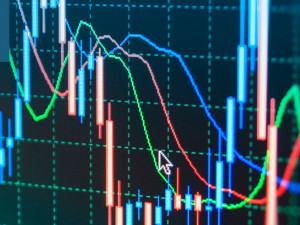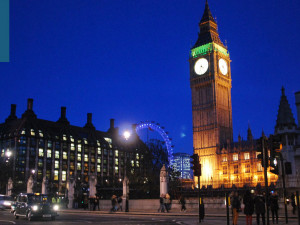
Prime Minister to tackle energy woes
Morning mid-market rates – The majors
7th September: Highlights
- Truss promises to rebuild the economy
- Services sector strength means further rate hikes likely
- Euro and eurozone economy have further downside potential
GBP – Truss begins work – faces PM questions today
She announced the most senior roles in her Cabinet, and it was clear that she intends to reward those who have supported her in the campaign, Boris Johnson stalwarts like former Deputy Prime Minister Dominic Raab and Party Chairman Grant Schapps have been discarded while there are significant promotions for Kwasi Kwarteng and James Cleverly, who become Chancellor of the Exchequer and foreign Secretary respectively.
In her first speech as Prime Minister, she promised to tackle the cost-of-living crisis precipitated by the rising energy bills, head on and rebuild Britain from the ground up.
Her three main priorities will be cutting taxes, a permanent solution to the energy crisis and sorting out hospital waiting lists as part of an overhaul of the National Health Service.
She starts work today with a baptism of fire as she faces Keir Starmer across the dispatch box in Prime Minister’s questions. It will then be back to working on the plans to supply help for those most affected by the energy crisis.
It is thought that she favours an eighteen-month freeze in the cost of gas and electricity for domestic consumers, but she also faces a major dilemma with business users, who are facing even more serious issues since they do not have a cap.
One of the hardest hit sectors of the economy is hospitality. Having suffered more than most during the pandemic, it faces significant rises in energy costs and proprietors must perform a delicate balancing act since they will be aware that they are unable to pass on the entire rise in costs to their customers as they face their own problems and an evening out may become a luxury they cannot afford any more.
Away from politics, the latest composite PMI was published yesterday, and it showed that the economy stands on the brink of a recession. Services output fell to 50.9 in August, down from 52.5 in July. That dragged the composite down below to 49.6, below the 50 level, which denotes a contracting economy.
That is the lowest level for eighteen months and shows that the economy is flatlining and underlines the job that the Government faces over the next six months. Following the blind optimism of the Johnson era, it will at least be refreshing to be governed by a team which acknowledges the issues it faces.
Sterling initially made ground as Johnson’s departure was made official, rising to 1.1609 versus the dollar, but fell back to close virtually unchanged at 1.1528.
Recommend our services and earn up to £75 per successful referral
USD – Data means seventy-five basis points likely
The markets were cheered yesterday by a slightly less hawkish view on future monetary policy from the Fed. Chairman, Jerome Powell. While he continues to signal higher rates, he feels that the Central bank may be in a position in the coming months to temper the size of the increases.
It appears that in the current environment that Powell feels that rates set just above the neutral point where they are neither restrictive nor accommodative would be the right level. The issue is deciding where that point is, and it may take some time to discover.
The pain that is being felt, particularly by lower income families, is growing month by month as interest rates continue to climb and yet as inflation continues to climb, they are beginning to question whether the policy is working since they appear to be paying twice. Once in the rents and home loans that continue to increase with interest rates, and then again in shops where prices continue to increase.
The discussion at the FOMC meeting later this month is likely to be more outlook driven than it has been recently. On Powell’s own admission, the Fed is moving into stage two of its mission. Having reached what many people consider to be neutral territory, the question now is how much further rates need to rise and once they have reached that sweet spot, how long before that can start to be lowered.
Of course, the answer to those questions will depend on how inflation behaves, and that is down as much as anything to employment. The data release last week was encouraging, but little more and a significant increase in the September NFP of a revision in the August figures will throw the Feds calculations off.
Loretta Mester, President of the Federal Reserve Bank of Cleveland and a major inflation hawk, made a speech recently in which she commented that interest rates would likely reach 4% and there would be little chance of any cut in 2023.
She is scheduled to speak at a conference on the economy later today. It will be interesting to note if she has tempered her views at all.
The dollar index broke the 110 level conclusively yesterday. It rose to a high of 110.57 and closed at 110.22.
EUR – August PMI falls to 48.9
There is little donut that interest rates will move into positive territory for the first time in a long time. Indeed, Christine Lagarde has already indicated that rates will need to increase to fight inflation.
The issue that several economists see is that the Central Bank is fighting the wrong foe. Yes, inflation is rising exponentially, of that there is no doubt, but choking off demand is not going to bring it down, and until there is a solution to the energy price crisis it will continue.
While across the Eurozone the public are expected to pay higher prices for basic foodstuffs, the spectre of the energy crisis is worsening to such an extent that there may be power cuts this winter.
In Germany, factory orders fell by 13.6% in August after a fall of 9% in July. This led to composite PMI falling to 46.9 from 47.6.
This fall in output is being repeated all over the Eurozone and is likely to get worse, yet the Central bank will hike interest rates by at least fifty basis points tomorrow.
The euro is falling though support after support. It seems like yesterday that 1.10 was the major support, then 1.05 and then parity. All the while, analysts were warning it could reach 0.95. Now that seems the bare minimum that it could get to, with 0.90 now being openly considered.
The ECB hopes that hiking interest rates will prove a little support. The truth is that all they can hope for is to slow its descent, but we may yet see the all-time low before the economic situation begins to improve.
Data for industrial production in Germany will be released later this morning and will bring further unwelcome news, but this will likely mean that the ECB will only hike by fifty basis points tomorrow.
The euro fell to a low of 0.9863 yesterday but recovered a little to close at 0.9904.
Alan Hill
Alan has been involved in the FX market for more than 25 years and brings a wealth of experience to his content. His knowledge has been gained while trading through some of the most volatile periods of recent history. His commentary relies on an understanding of past events and how they will affect future market performance.”



